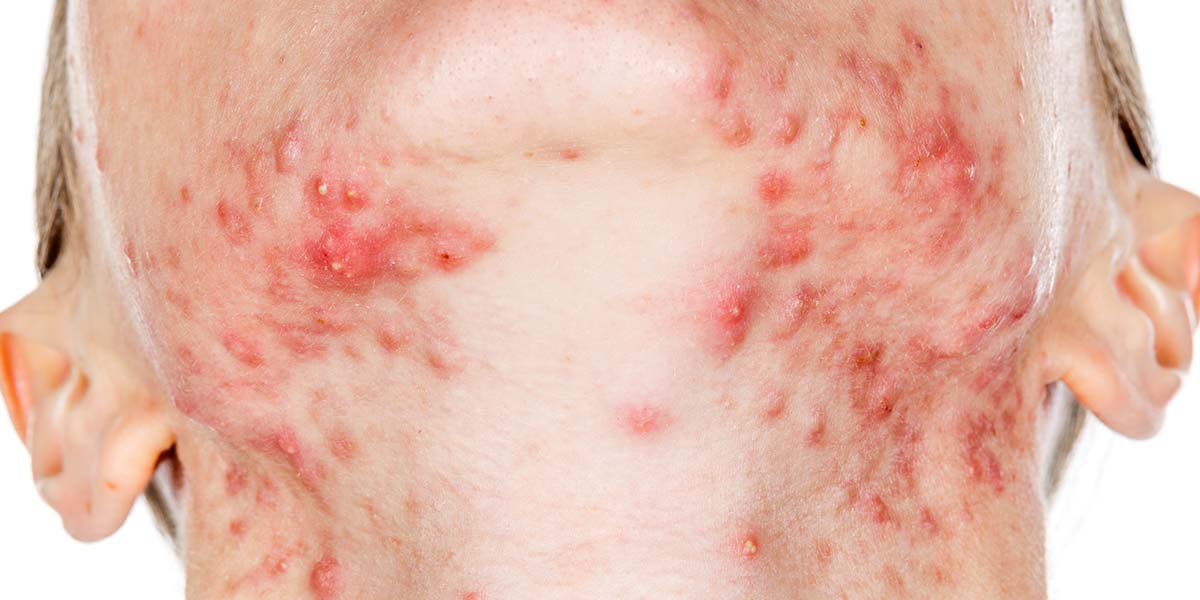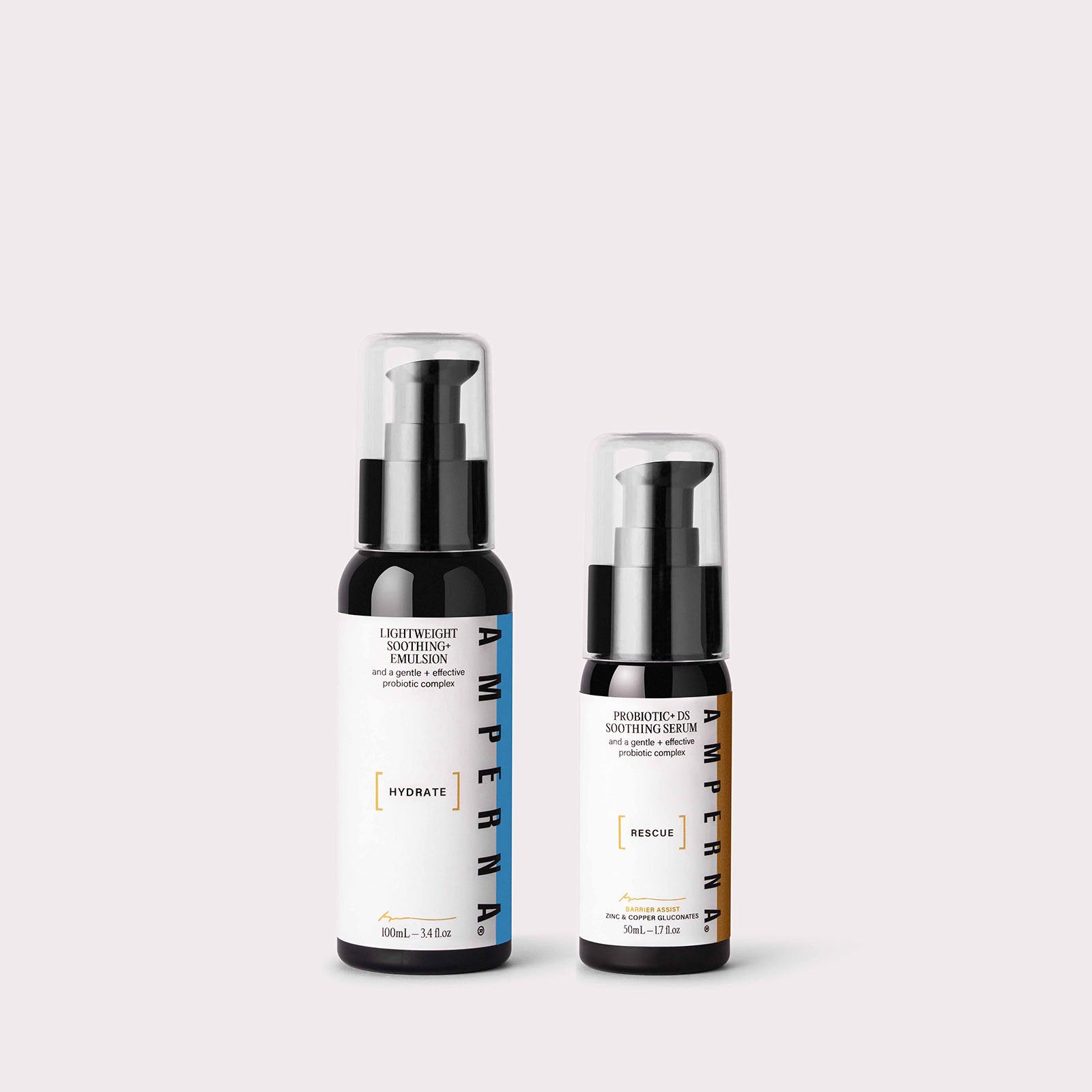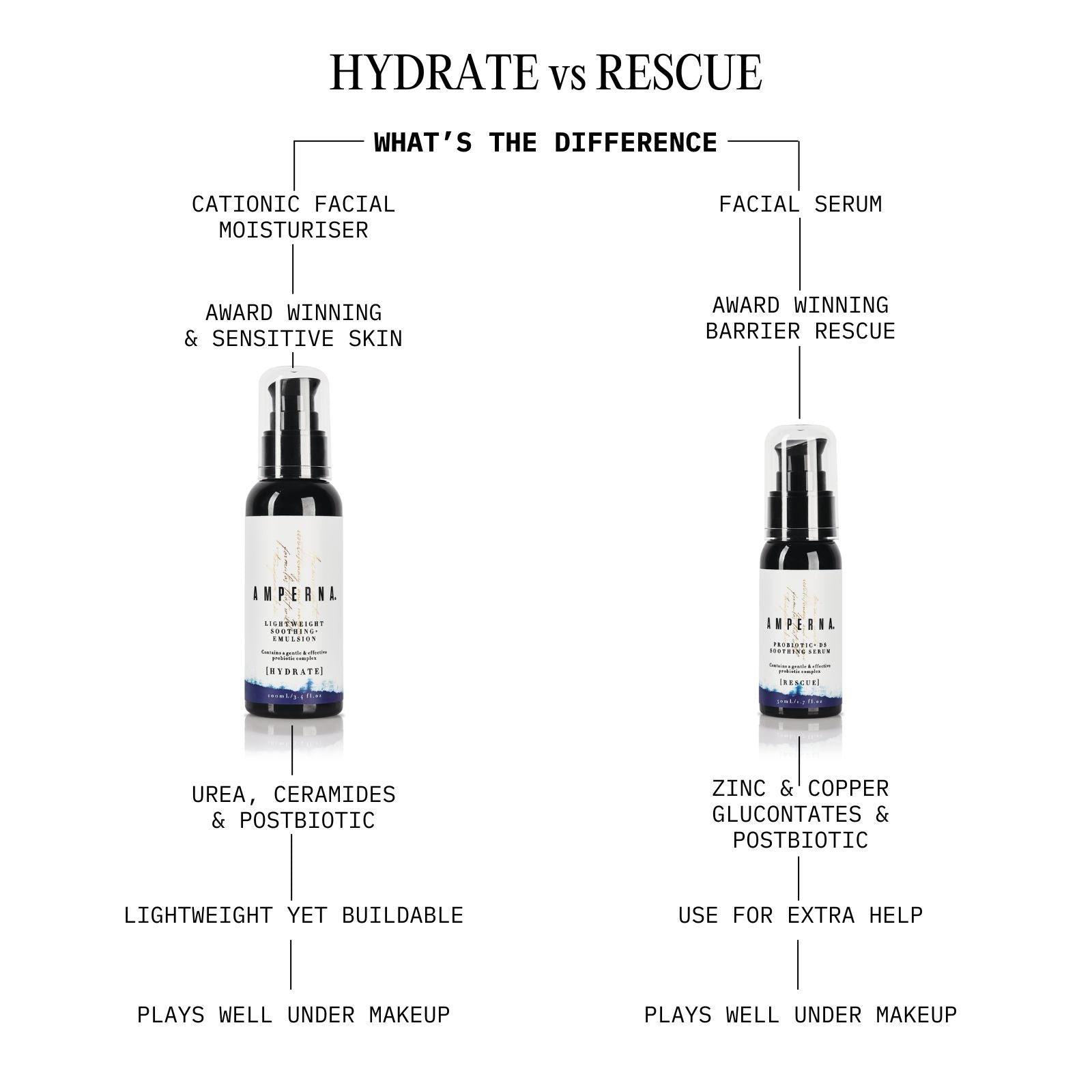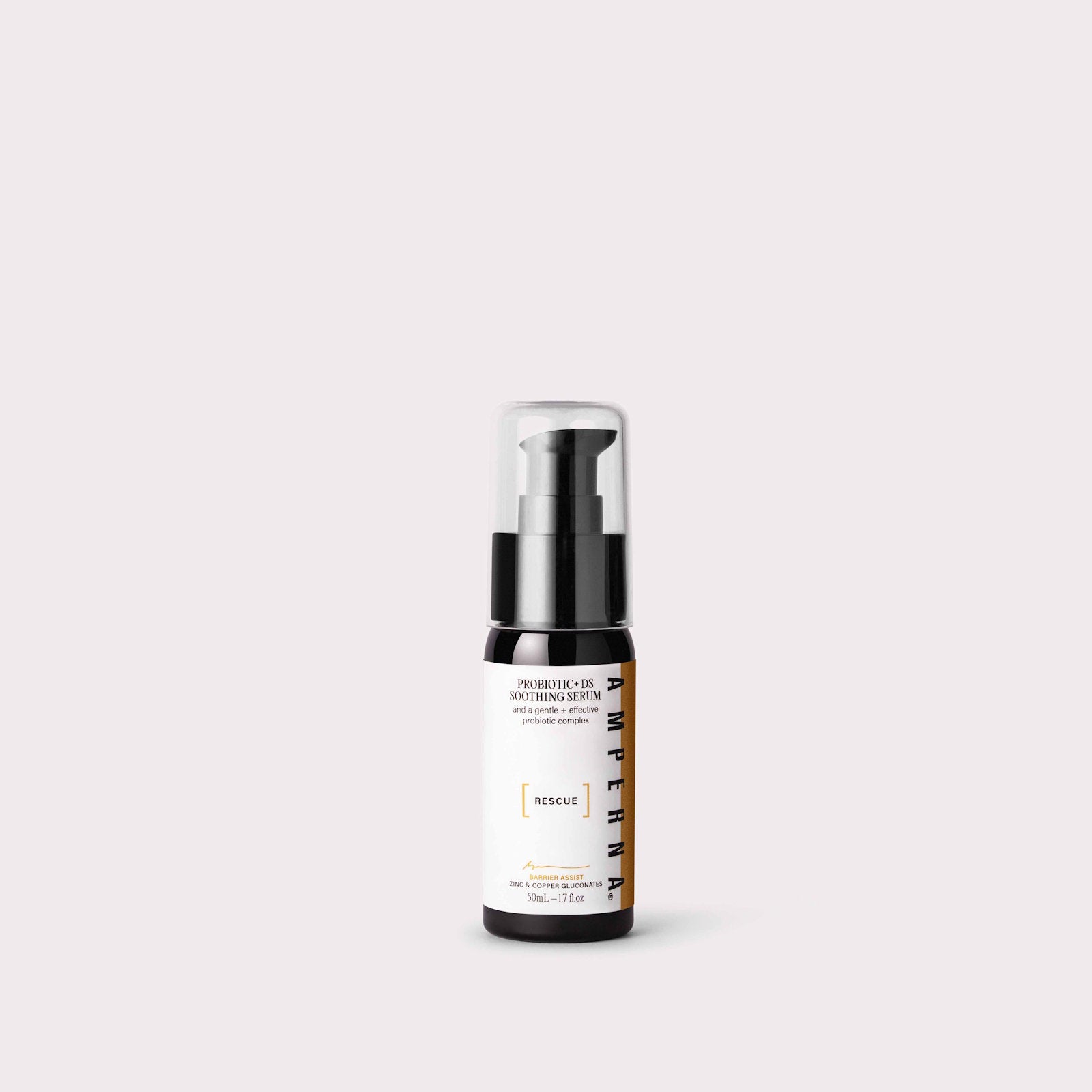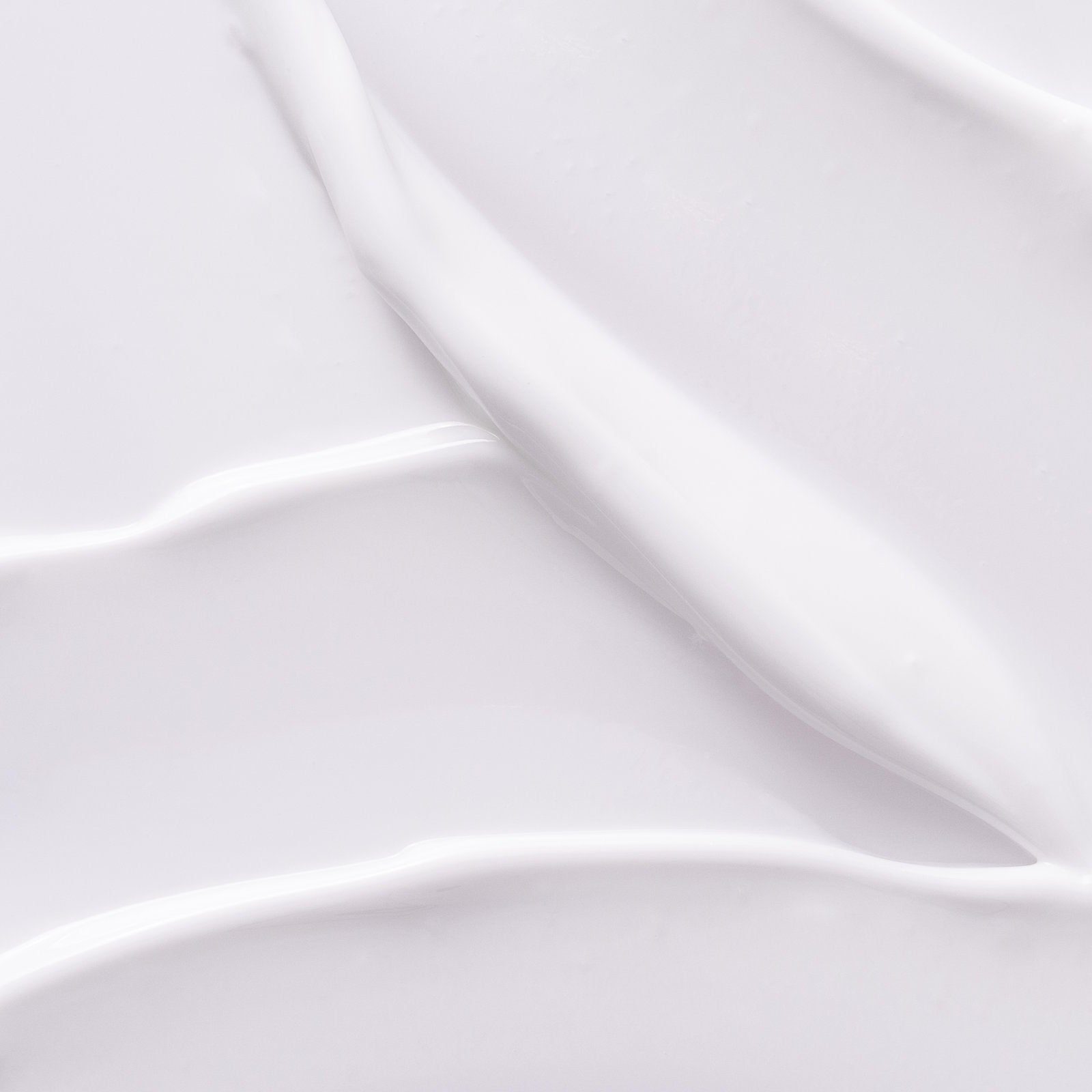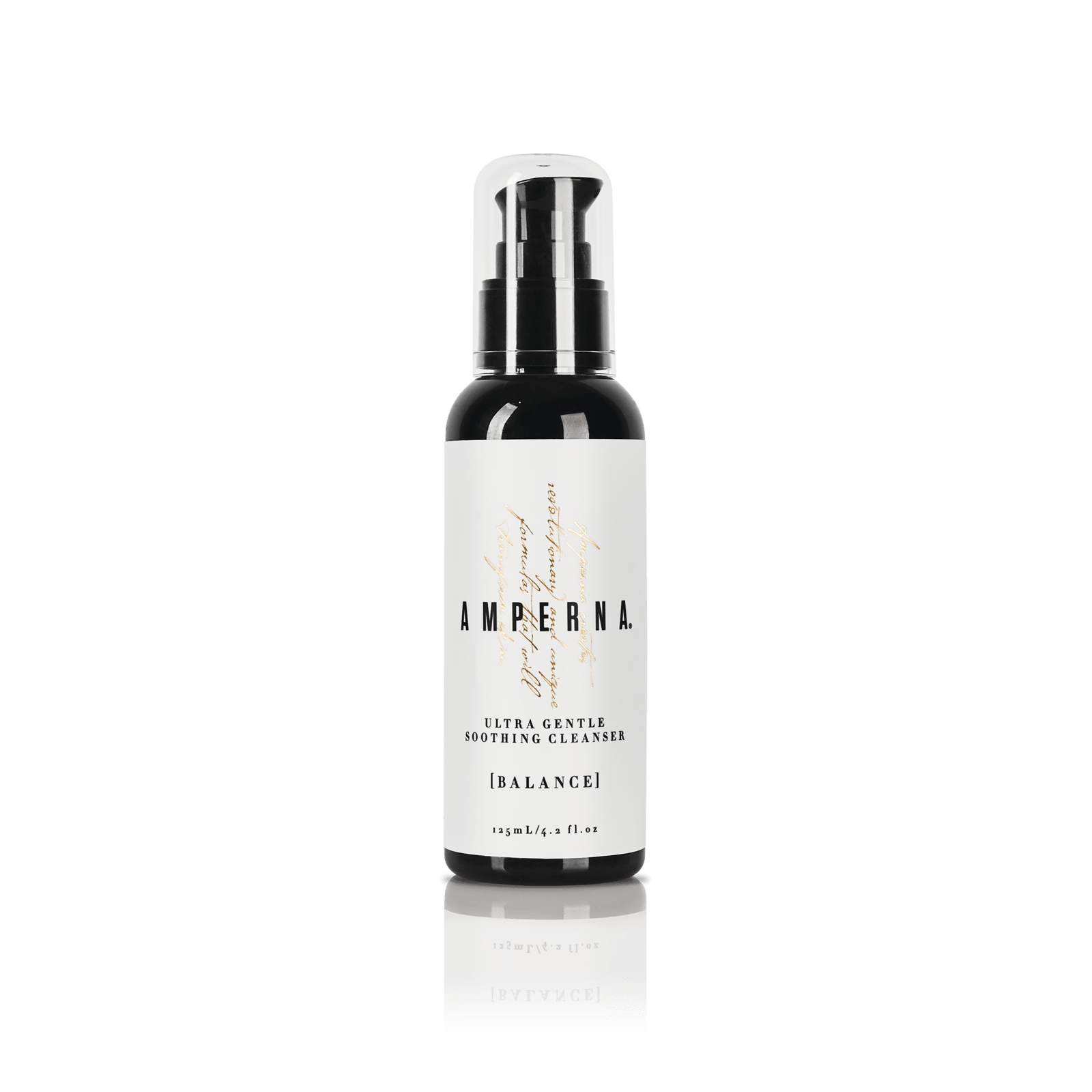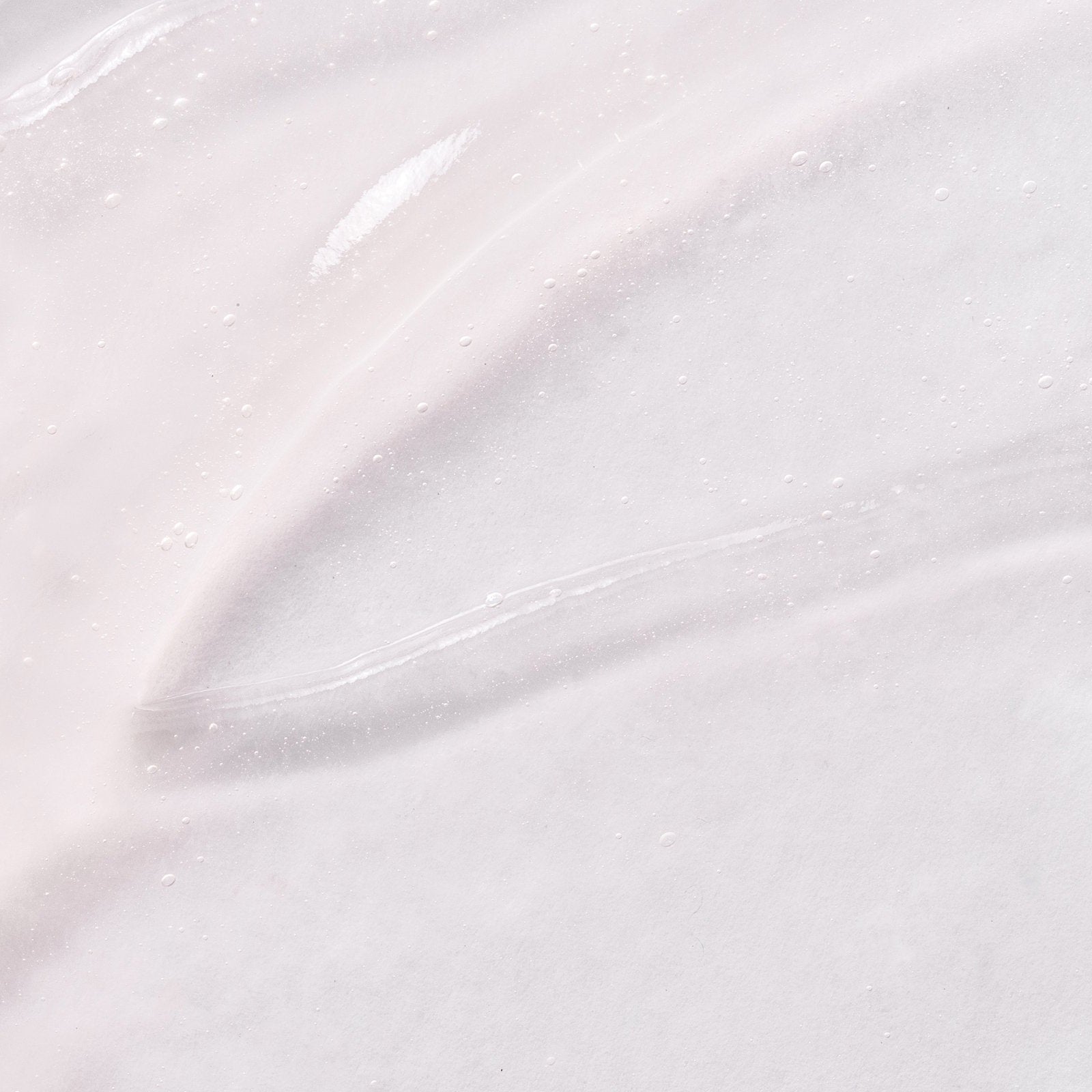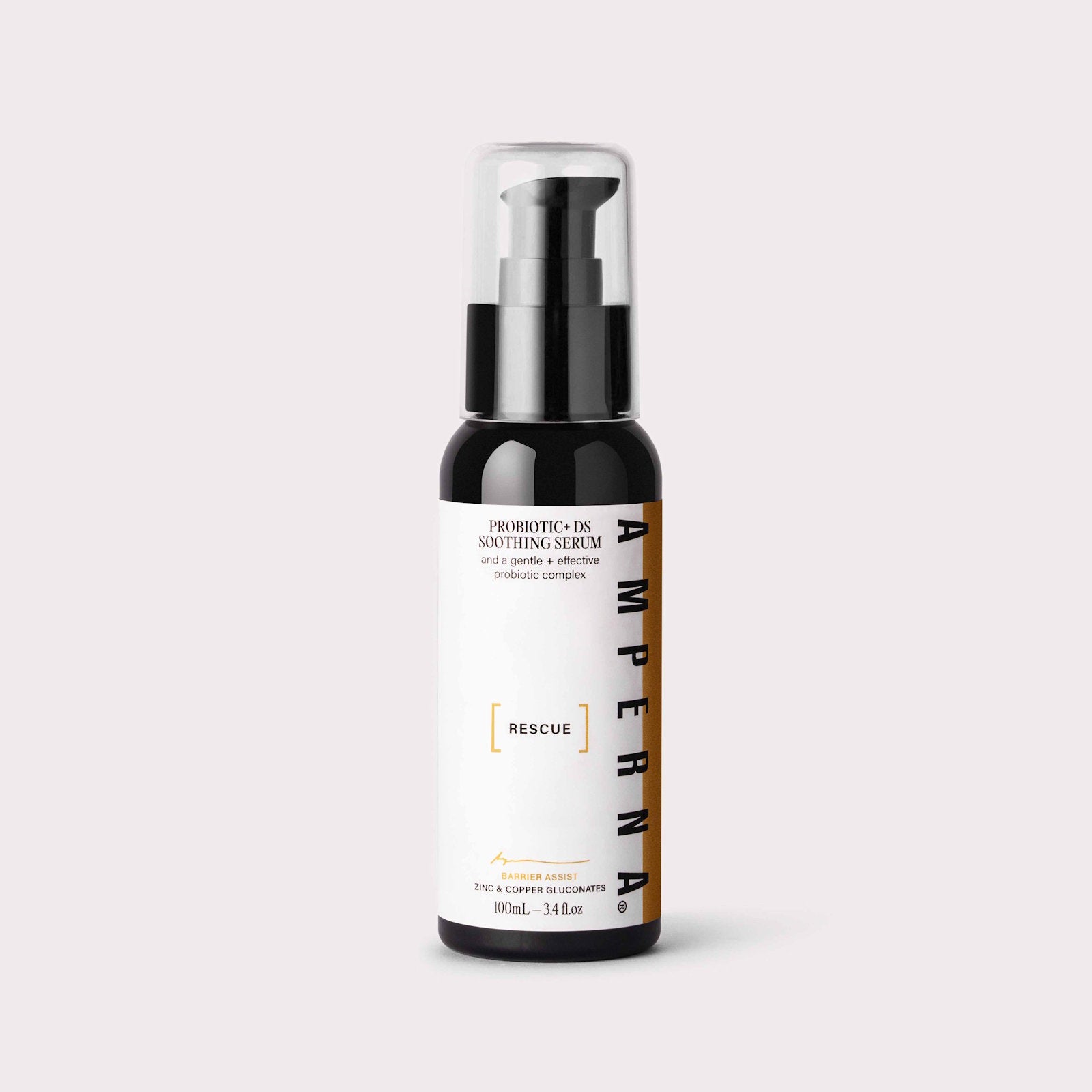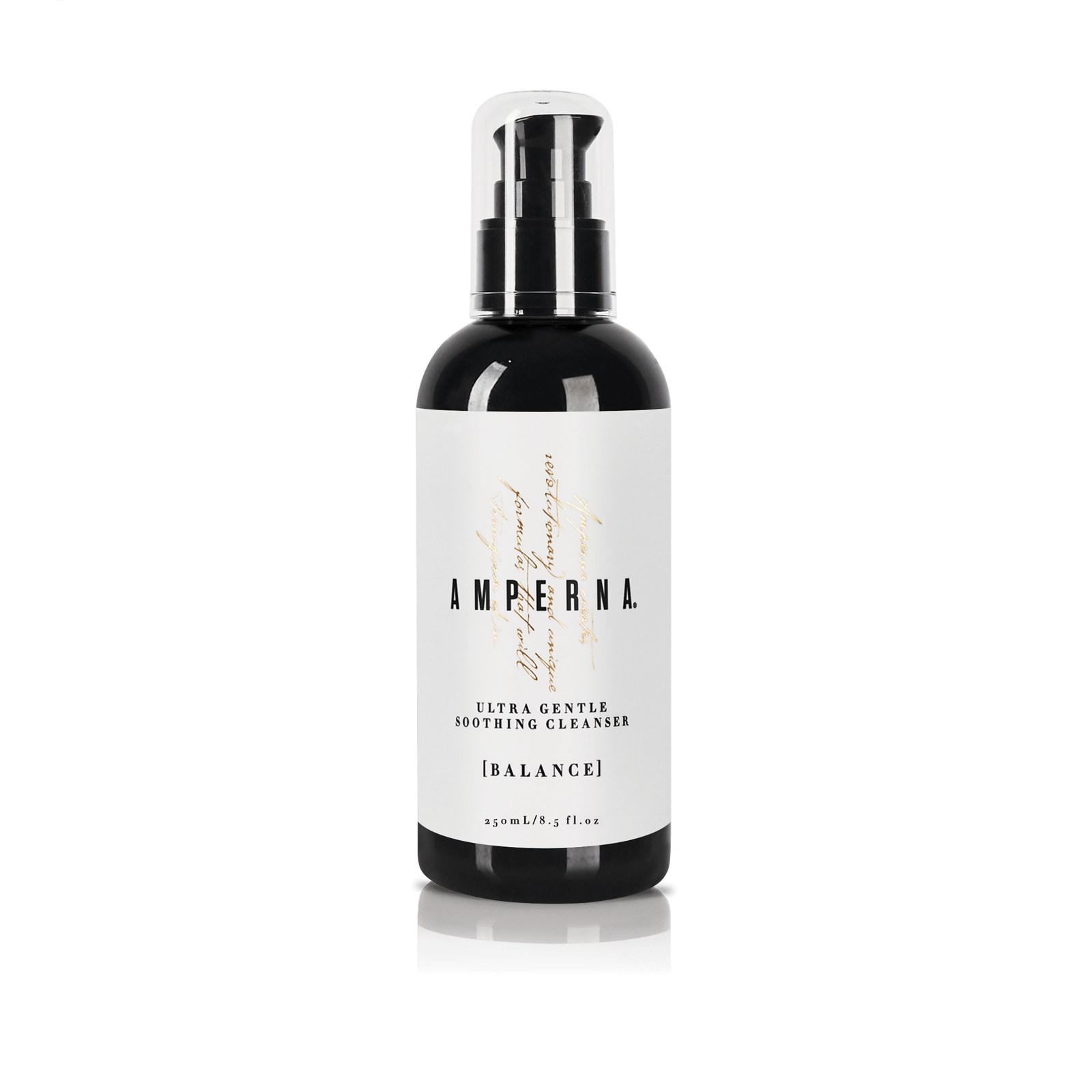Understanding your breakouts is the first step to helping your skin.
Did you know there are different types of acne?
At AMPERNA®, we believe that no two skin journeys are the same — and acne is no exception. While many people use the term “acne” to describe any kind of breakout, there are actually six distinct types, each with its own causes, symptoms, and treatment approach.
Knowing which type (or types) of acne you are dealing with can help you make better choices for your skin and avoid the one-size-fits-all treatments that often do more harm than good.
Here’s a breakdown of the six main types of acne, and how to care for them holistically and gently.
The 6 Main Types of Acne
1. Comedonal Acne - (Whiteheads/Blackheads/Milia)
Comedonal acne is the most common type of acne. This type of acne can happen anywhere on the face or body, and it can range from very mild to quite severe.
The small white types of pimples associated with whiteheads occur when skin cells and oil clog your pores. Blackheads occur when your pores are also clogged by sebum (your skins natural oil) and other types of debris, but the pore stays open.
Advice
It may be hard to resist, but we urge you to never pop, squeeze or scratch your whiteheads/blackhead pimples. This can cause bigger problems like bacteria spreading and make the area worse. Instead, switch your skincare to non-comedogenic products that do not clog your pores and practice good skin hygiene. Our Ultra Gentle Soothing Cleanser and Lactococcus ferment lysate-based products help gently rebalance the skin microbiome and prevent congestion.

2. Papule/Pustules
A papule blemish looks like a small red raised bump with no center. It may feel inflamed and come in clusters together. Papules are full of bacteria, oil, and dead skin cells, but do not contain any pus.
Pustules are what sometimes develop from papules, but not always. These are also small bumps surrounded by irritated, red, and swollen skin. Pustules are often caused by a bacterial infection in your pore and have a distinctive white or yellowish ‘head’ to the blemish.
Advice
Again, it is best to avoid popping or squeezing these types of pimples as the pus will spread around the face causing more papules and pustules to develop. Soothe, do not strip. Our Probiotic+ DS Soothing Serum is designed to calm inflammation and strengthen the skin’s barrier to reduce the severity of papules.
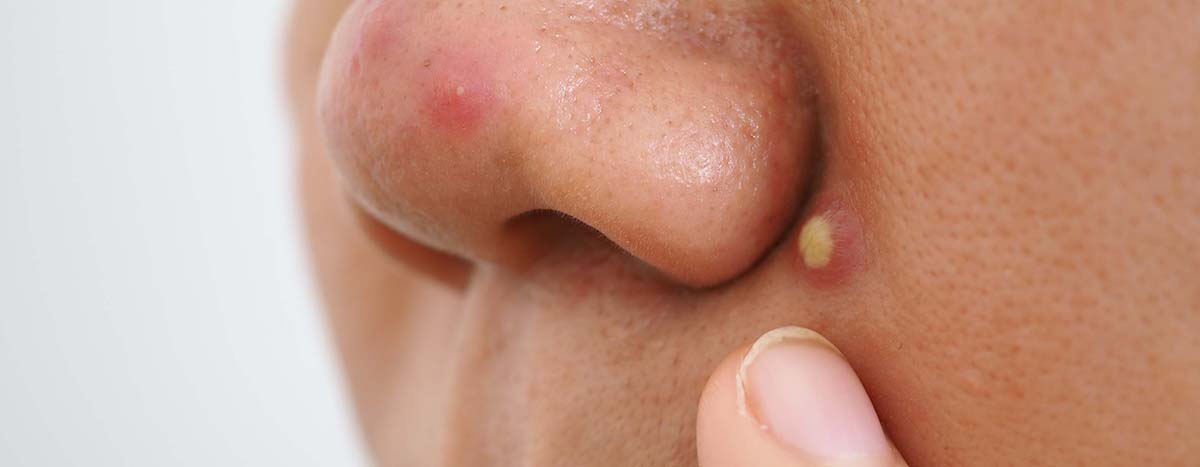
3. Acne Rosacea
Acne rosacea is one of four types of rosacea, which is a chronic inflammatory skin condition that typically develops during adulthood. Symptoms concentrate around the cheeks and nose which appear flushed and consist of persistent sensitivity, redness, irritation, and breakouts like acne.
Although considered a chronic condition, symptoms come and go, with periodic outbreaks brought on by specific triggers. Stress, sun exposure, eating spicy foods, or drinking hot liquids can make your symptoms worse.
Those with mild rosacea may not even know that have it. But it can progress to more severe forms, causing an inflamed, bulbous nose, and even eye problems, so it is best to be checked out by a dermatologist.

4. Nodular Acne
Nodular acne is a more severe type of acne vulgaris. They appear as large, red, deep lesions over 5mm in diameter which are painful to touch. Nodular acne typically happens when bacteria cause a painful infection to develop inside the layers of a pore. If you are finding it too painful to even touch the infected pimple, there is a good chance that you are dealing with a nodule. This type of acne is generally not filled with pus and instead are a more solid fibrous mass.
Advice
Talk to your healthcare provider about what treatment options you have. Aside from recommending retinoids (Vitamin A) they may prescribe you a prescription-strength salicylic acid to help dry out dead skin and excess oil trapped in the nodule. Or you may need a round of antibiotics to help kill the bacteria trapped in your pores.
This type of acne often requires a multi-pronged approach, including skincare, lifestyle, and possibly medical support. AMPERNA®'s gentle, microbiome-supporting formulas can be used alongside other treatments to soothe and repair.

5. Cystic Acne
This is the most severe and painful type of acne and unfortunately the most difficult to treat. Cystic acne is a combination of all previous acne symptoms mentioned above but the lesions are embedded much deeper in the skin. They are incredibly inflamed and painful to touch. These blemishes can occur anywhere on the body and usually contain blood and a higher risk of busting and scarring. Cystic acne can take weeks, months, sometimes years to heal as they can cause the skin a lot of damage.
There are three main types of acne scars that nodules or cysts can leave behind.
- Indented (most common): Indented scars, called atrophic scars, appear as indents in the skin with smooth or sharp edges. They are the most common type of scars.
- Raised: Raised scars, called hypertrophic scars, appear as elevations above the skin. When they first form, they are the same size as the original cyst or nodule, but over time these elevated scars may decrease in size.
- Raised (Keloid): Keloid scars are a specific kind of hypertrophic scar that are bigger than the original cyst or nodule, and do not decrease with time.
Doctors and dermatologists generally recommend oral antibiotics in your treatment plan, however, may only provide temporary relief of your condition.
For people suffering from severe cystic acne your doctor or dermatologist may recommend isotretinoin (Accutane) an oral medication.
IMPORTANT NOTE: Use caution, isotretinoin causes severe and sometimes lifelong side effects, as well as birth defects, so its use should be carefully considered alongside a trusted physician, and never as a first-line treatment.

6. Fungal Acne
Unlike other acne types, fungal acne is not caused primarily by oil and bacteria in your pores. Instead, the small pimple-like bumps are caused by an overgrowth of yeast (a type of fungus). Also known as folliculitis or a yeast infection, fungal acne causes hair follicles to get infected and inflamed. This can happen anywhere that you have hair on your body and is commonly caused by exercise, sweating, and tight clothing. They usually cause you itching.
Causes of Fungal acne include:
- Trapped moisture – wearing tight and/ sweaty exercise clothes for prolonged periods of time.
- Medication – antibiotics can reduce the bacteria on your skin which can allow an overgrowth of fungus to take place.
- Suppressed immune system – if you have a compromised immune system you may be susceptible to develop fungal acne.
- Diet – yeast feeds off carbohydrates, so be mindful of what you are eating as it may be contributing to a fungal growth.
- Clothing material – non-breathable materials can produce extra sweat and moisture. This is the perfect environment for yeast growth.
You might be dealing with fungal acne if you’ve tried multiple acne treatments with no results.

In Summary
Understanding the type of acne you are experiencing can help you choose gentler and more effective treatments. At AMPERNA®, we focus on calming the skin, strengthening the barrier, and restoring balance instead of fighting acne with harsh, stripping formulas.
Whether you are dealing with congestion, inflammation, or deep cystic breakouts, we are here to support your skin and your journey every step of the way.
References:
Types of Acne: Pictures, Treatments, and More (healthline.com)
Overview of the Types and Stages of Acne (verywellhealth.com)
7 Types Of Acne: Causes, Treatment, And Prevention - Bodewell (bodewellskin.com)
